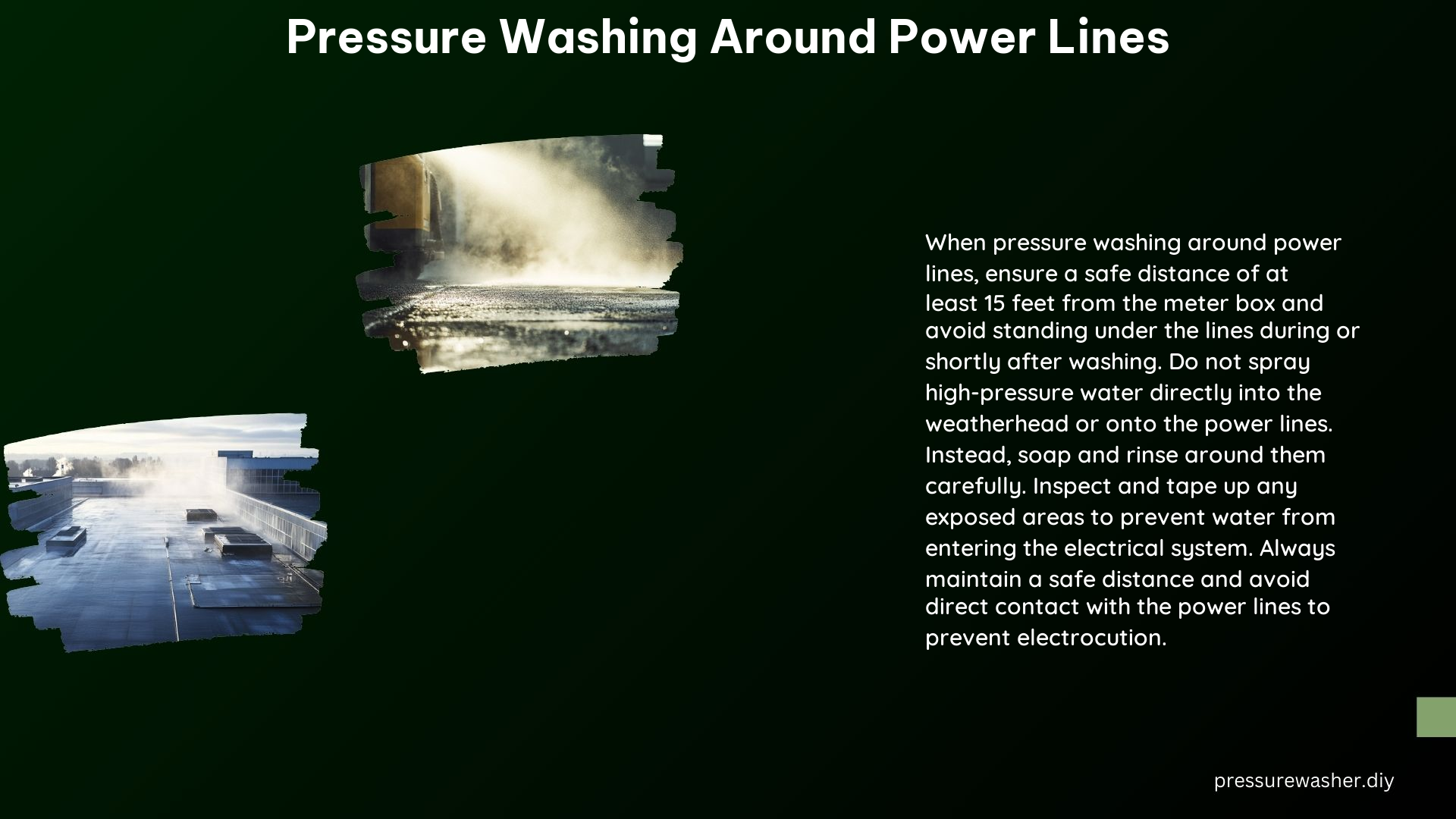Pressure washing around power lines requires meticulous planning and execution to ensure the safety of both the homeowner and the electrical infrastructure. This comprehensive guide will provide you with the necessary precautions, technical specifications, and additional tips to navigate this delicate task successfully.
Precautions: Safeguarding Your Home and Electrical System
Identify Power Lines
- Carefully inspect your property to locate all overhead and underground power lines, including the thicker wires running directly to your home’s meter box.
- Pay special attention to power lines near the edge of your property, as they may be more vulnerable to water exposure during pressure washing.
Turn Off Outdoor Power Circuits
- Shut off all outdoor power circuits, including electrical outlets, before beginning the pressure washing process.
- This step is crucial to prevent the risk of electrocution or damage to your home’s electrical system.
Clear the Area
- Remove any debris, toys, or other items that could pose a tripping hazard or interfere with your pressure washing operations.
- Ensure a clear and unobstructed work area to maintain control and focus during the cleaning process.
Wear Protective Gear
- Invest in a high-quality pair of protective goggles to shield your eyes from water, debris, and potential splashes.
- Consider wearing non-slip, waterproof boots to enhance your stability and traction on wet surfaces.
Avoid Direct Spraying
- Never spray high-pressure water directly onto power lines, the weatherhead, or the meter box.
- Carefully direct the water spray around these sensitive electrical components, maintaining a safe distance to prevent water intrusion.
Inspect and Secure Electrical Components
- Thoroughly inspect the meter box and weatherhead for any cracks, openings, or loose seals.
- Seal any identified vulnerabilities with weatherproof tape or sealant to prevent water infiltration.
Maintain a Safe Distance
- Keep a minimum distance of 15 feet from the meter box, weatherhead, and power lines during and after the pressure washing process.
- This distance helps to mitigate the risk of accidental contact or water exposure to the electrical infrastructure.
Avoid Ladders
- Refrain from using ladders while pressure washing, as they can be unstable and increase the likelihood of losing balance or control.
- Opt for a telescoping wand or extension hose to reach higher areas without compromising your safety.
Technical Specifications: Optimizing Pressure Washing Effectiveness

Pressure Washer Settings
- Use a low-pressure setting, typically less than 1,000 PSI (pounds per square inch), to minimize the risk of water penetration into electrical components.
- High-pressure water can potentially force its way into the weatherhead, meter box, or other sensitive areas, leading to costly repairs or even electrical hazards.
Nozzle Angle and Distance
- Hold the pressure washer nozzle at a 45-degree angle relative to the surface you’re cleaning.
- Maintain a safe distance, generally around 2-3 feet, from the power lines, weatherhead, and meter box to prevent water from directly entering these components.
Water Volume Control
- Avoid spraying large volumes of water across the power lines or directly into the weatherhead.
- Opt for a more controlled, targeted approach to minimize the risk of water exposure to the electrical infrastructure.
Additional Tips: Enhancing Safety and Effectiveness
Professional Assistance
- If you’re unsure about any aspect of pressure washing around power lines, consider hiring a professional pressure washing service with the necessary expertise and equipment.
- Experienced technicians can navigate the complexities of this task while adhering to safety protocols and local regulations.
Regular Maintenance
- Establish a routine maintenance schedule to inspect and address any issues with the weatherhead, meter box, and other electrical components on your property.
- Proactive maintenance can help prevent water damage and mitigate the risks associated with pressure washing around power lines.
By following these comprehensive precautions and technical specifications, you can safely and effectively pressure wash around power lines, ensuring the protection of your home’s electrical system and the safety of yourself and your family.
References:
- Exterior Medics. (2016, September 15). Safety First How To Powerwash Your Home Safely. Retrieved from https://www.exteriormedics.com/blog/how-to-powerwash-your-home-safely
- Pressure Washing Resource. (2018, December 19). Washing Around powerlines connecting to house? Retrieved from https://pressurewashingresource.com/community/t/washing-around-powerlines-connecting-to-house/16740
- Reddit. (2016, June 20). Nervous about pressure washing around where the electric line connects to my house. Retrieved from https://www.reddit.com/r/HomeImprovement/comments/4ozvos/nervous_about_pressure_washing_around_where_the/
